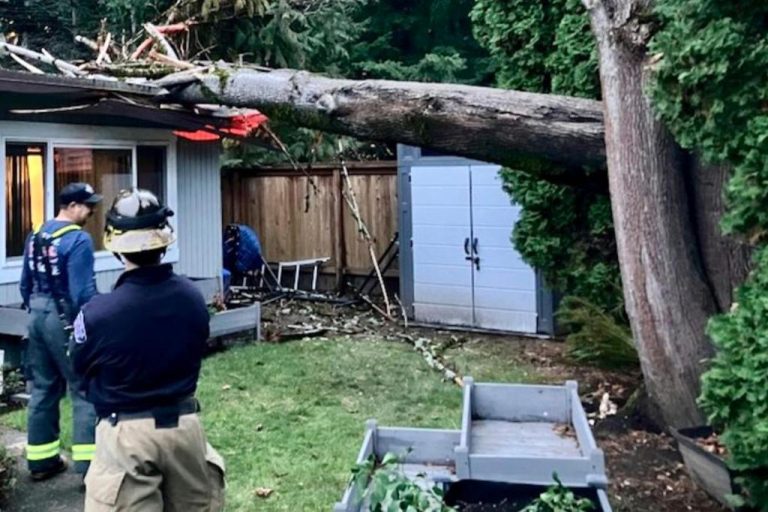By HALLIE GOLDEN and LISA BAUMANN, The Associated Press
SEATTLE (AP) — A massive storm has swept through the U.S. northwest, bringing strong winds and rain that caused widespread power outages, downed trees and killed at least one person.
The Weather Prediction Center on Friday issued a risk for excess rainfall and a hurricane-force wind warning was in effect as California and the Pacific Northwest's strongest atmospheric river of the season – a flood of moisture – flooded the region. The storm system that began hitting Tuesday is considered a “bomb cyclone,” which occurs when a cyclone rapidly intensifies.
Falling trees hit homes and scattered roads in Northwest Washington. A woman was killed Tuesday night when a large tree fell on a homeless encampment in Lynwood, Washington, the South County Fire Department said in a statement. A tree fell on a vehicle, temporarily trapping a person inside. The agency later said the person was in stable condition.
The fire department in Bellevue, about 10 miles (16 kilometers) east of Seattle, posted on the social platform Don't go out if you can avoid it.
Earlier Wednesday, more than 600,000 homes in Washington state were without power, according to poweroutage.us. But the number of outage reports fluctuated wildly Tuesday night, possibly in part because some weather and utility agencies struggled to report storm information due to network outages and other technical issues. It's unclear whether this number is accurate. More than 15,000 people were without power in Oregon and nearly 19,000 in California.
Wind speeds peaked in Canadian waters as of 8 p.m., with gusts reaching 101 mph (163 kph) off the coast of Vancouver Island, according to the National Weather Service in Seattle. Wind gusts of up to 79 mph (127 kph) were seen on the Oregon coast Tuesday night, while 77 mph (124 kph) was recorded at Mount Rainier in Washington, according to the National Weather Service in Medford, Ore. km/h).
The National Weather Service warned people on the West Coast about the dangers of trees during high winds, posting on the X: “Avoid outside rooms and windows and use caution when driving to stay safe.”
In northern California, flood and wind warnings were in effect, with up to 8 inches (20 centimeters) of rain expected in parts of the San Francisco Bay Area, North Coast and Sacramento Valley. Dangerous flash flooding, rock slides and mudslides are expected, according to the National Weather Service Weather Prediction Center.
A winter storm warning was issued for areas above 3,500 feet (1,066 meters) in the northern Sierra Nevada, where up to 15 inches (28 centimeters) of snow could fall over two days. Forecasters said wind gusts in the mountains could reach 75 mph (120 km/h).
The National Weather Service issued a flood warning for parts of southwestern Oregon through Friday night, while high winds and waves disrupted ferry routes between Port Townsend and Cooperville in northwest Washington.
A blizzard warning has been issued for much of Washington's Cascade Mountains, including Mount Rainier National Park, starting Tuesday afternoon, with up to a foot of snow and wind gusts as high as 60 mph (97 km/h). Crossing the mountain pass is difficult, if not impossible.
Originally published:








